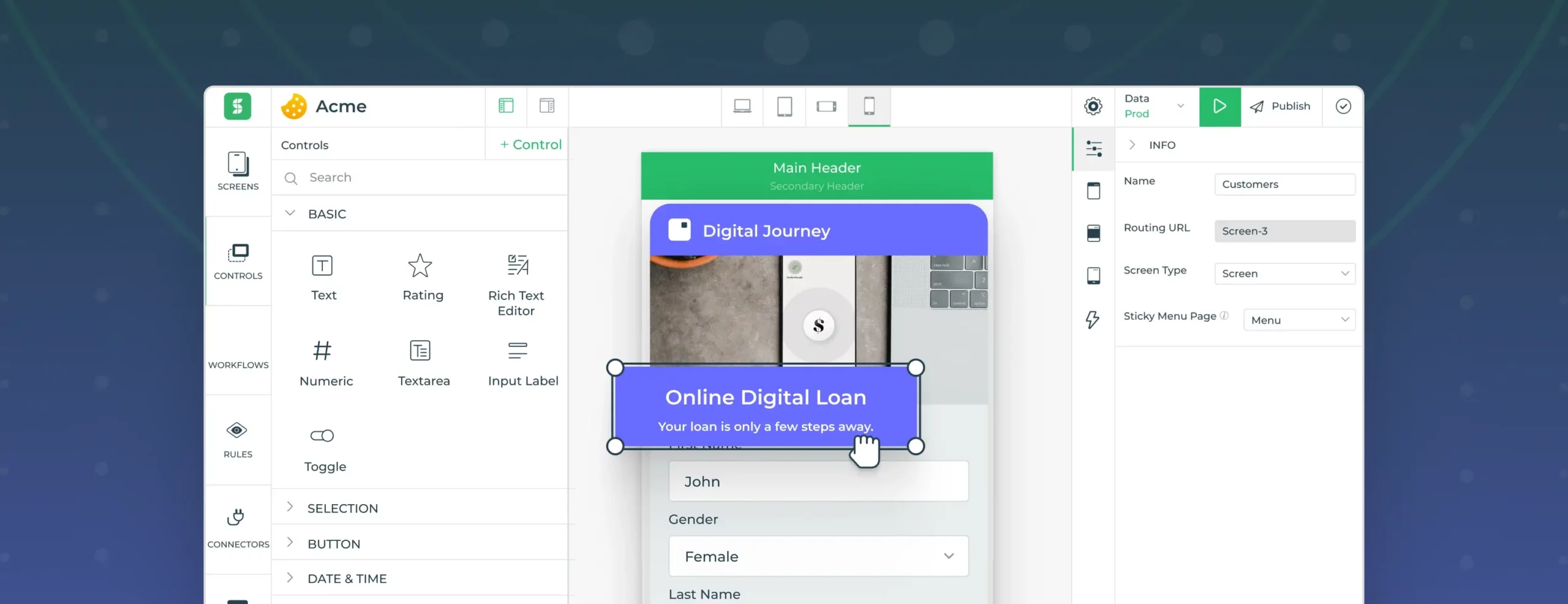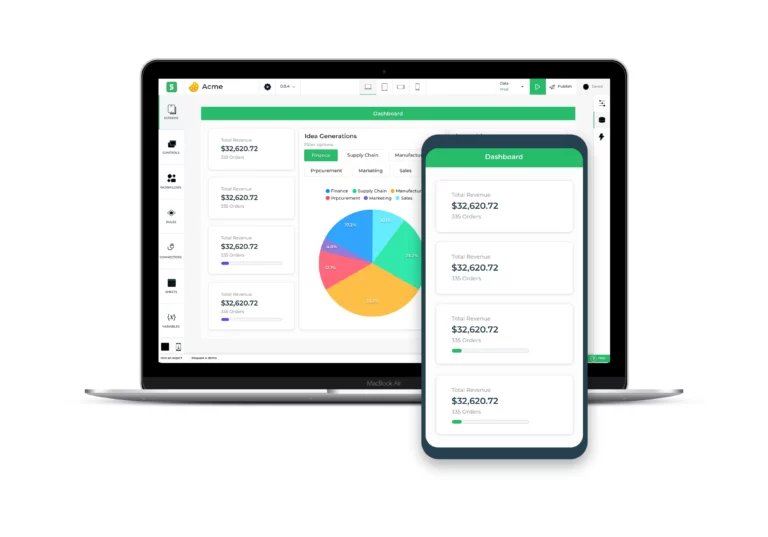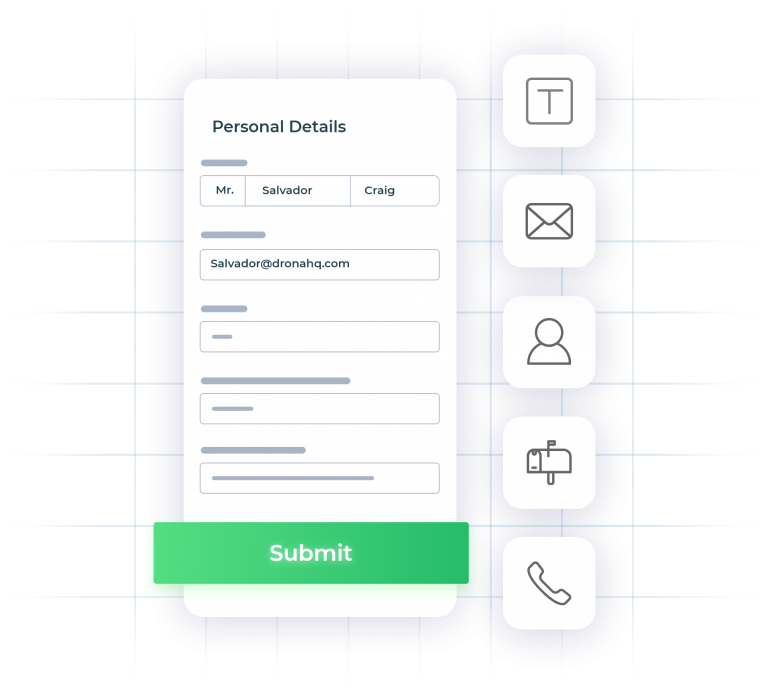

Low code UI for amazing user experience
In a fireside chat at Config 2023, Brian Chesky, Co-founder & CEO of Airbnb, shared a compelling vision for the future of design leadership. His insights resonate deeply with the ongoing discourse about the role of product managers and designers in the tech industry. As Chesky articulated, “There’s a whole new generation of designers that aren’t going to work for engineers. They’re going to sit alongside engineers. They’re not going to be told what to do by product managers. They’re going to help drive the product. Some of them are going to choose to drive companies. Because ultimately, what everyone wants is to have a product people love.”
Creating a product that people love! Strong words. Let’s look at the importance of UI/UX in creating beloved products and how low-code development comes into play.
Importance of UI/UX in creating beloved products
UI and UX of an application have a significant impact on its success. User experience (UX) and user interface (UI) design are crucial aspects of creating a successful product. Good UX/UI design can make a product easy to use, enjoyable to interact with, and accessible to all users ultimately helping achieve business goals such as increased revenue, user retention, and customer loyalty. And being equipped with the essential skills to design good UI and deliver good UX can contribute significantly to the success of an application.
In addition to improving user engagement and satisfaction, UI and UX design also impact the overall business value of the application. A well-designed UI/UX can result in increased user productivity. Conversely, a poorly designed UI/UX can lead to decreased user productivity.
The UI refers to the visual aspects of an app, such as the layout, colors, and typography, while the UX refers to the entire user journey, including how easy it is to use the app, the responsiveness of the app, and the overall satisfaction of the user.
However, UI and UX design go hand in hand. A visually appealing UI will attract users, but a great UX will keep them coming back for more. They complement each other, and without one, the other falls short.
How UI/UX can impact apps success
A well-designed UI can attract users and increase engagement, while a positive UX can result in higher user satisfaction and retention rates. Isn’t this enough to be considered as a success, yes it can be.
So, it’s crucial to ensure your app’s UI and UX align with the app’s goals and target audience.
Let’s see where else it impacts:
- Efficiency: Efficient UI/UX design can help users complete tasks quickly and easily, making the app more enjoyable to use. This can lead to increased user satisfaction and loyalty, as users will appreciate how easy it is to use the app.
- Usability: Good UI/UX design can make an app more intuitive and user-friendly. This means that users can navigate the app with ease, which can result in higher user engagement and better retention rates. Additionally, a well-designed UI/UX can reduce the likelihood of negative reviews, as users will be more likely to have a positive experience.
- Brand Perception: The look and feel of an app can greatly impact how users perceive a brand. Good UI/UX design can make an app look polished and professional, which can lead to a positive brand perception. A well-designed app can also help differentiate a brand from its competitors, which can be a competitive advantage.
- User Satisfaction: Ultimately, good UI/UX design can lead to increased user satisfaction. Users are more likely to continue using an app if they have a positive experience, which can result in increased app usage and positive word-of-mouth marketing.
Low-code as the enabler for good UI/UX
Steve Johnson, VP of Design at Netflix, highlights the need for designers to be more business-savvy. He emphasizes that “Design without business is just decoration.” Interestingly, the parallel between Brian’s call to redefine product management and the low-code ethos emerges here.
While Chesky challenges traditional product management structures, low-code platforms empower designers and even PMs to contribute directly to product development. The democratization of the development process allows creative minds to engage with business goals, aligning design decisions with broader company priorities. This alignment is where the power of low-code in creating a symbiotic relationship between design and business becomes evident.
As we navigate the changing landscape of design leadership, the union of good design and low-code technology emerges as a catalyst for innovation. Designers, engineers, and product managers can collaboratively shape products that resonate with users while meeting business objectives.
Adding low code to your design tech stack
Low code is a new and exciting way for software developers to create great user interfaces and user experiences with minimal effort. It can be intimidating to start designing an app from scratch, especially if you are not a pro frontend developer, but with low code, you can quickly create UI/UX designs that are tailored to your specific needs. This technology is ideal for junior developers that are just beginning, senior developers who are under a time crunch, backend developers who need to create reliable ui on top of their data, and product managers that need to do quick prototyping or PoCs, the list can go on really.
Here are some ways in which low code capabilities are making UI designing simpler:
- Pre-built UI components: Low code platforms provide a library of pre-built components that can be used to build UIs without the need for manual coding. These components include buttons, menus, forms, and other UI elements, making it easy for designers to create UIs quickly. Brings standardization, branding, and validations, across the app in an easy way.
- Drag and drop interface: Low code platforms provide a visual interface that allows designers to drag and drop components onto a canvas to create UIs quickly. This eliminates the need for manual coding and allows designers to focus on the visual aspect of UI design.
- Easy customization: Low code platforms allow developers to customize pre-built components by changing their properties, such as color, font, and size. This makes it easy for designers to create unique UI designs that match their brand or style.
- Reusability: Low-code platforms allow designers to create reusable components that can be used across multiple UI designs. This saves time and effort by allowing designers to create components once and use them multiple times.
- JavaScript: By using custom JavaScript, designers can create a unique and engaging user experience that sets their app apart from the competition. For example, they can create custom UI elements according to the need and that enhances the user’s experience.
- Testing and feedback: Low code platforms provide built-in testing and feedback features that allow designers to test their UI designs and receive feedback from stakeholders. This makes it easy for designers to iterate on their designs and make improvements based on feedback.
The key elements to focus on and how low code can help
Creating a user-friendly and intuitive interface is essential to the success of any application, but knowing which UI and UX elements to prioritize can be challenging.
However, low code can assist in the UI/UX design process by offering powerful tools and capabilities that simplify the design process, enable faster iterations, and ultimately help create a better user experience.
Here are a few key elements that will eventually make your app better:
Layouts and screens:
A well-designed layout can help improve the user experience by making it easy for users to navigate and access information. Additionally, the screen type determines how information is displayed, making it essential to choose the right screen type to convey information effectively.
DronaHQ recognizes the importance of layouts and screen types in app design and offers a range of pre-built options to choose from. Users can select from various layout options such as one-column, two-column, left sidebar, right sidebar, and more. Additionally, the platform provides different screen types like menu, tray, panel, pop-up, and more, making it easy to choose the right layout and screen type to fit the needs of the app.
Interactive elements:
Putting interactive components enables users to take various actions, and their presence can enhance the overall user experience. For instance, incorporating clickable elements like buttons can significantly improve user engagement and facilitate smoother navigation within the application.
For example, when a user clicks on a button, they may see a loading animation, which lets them know that the application is processing their request, or let’s say a button can be used to navigate to another page or link and many more such cases.
DronaHQ offers a wide range of ready UI components, including buttons, tables, and more, which can be easily integrated into your application. And using actionflows these can be turned into interactive components.
Navigational elements:
Navigational elements are a critical component of UI/UX design as they facilitate easy access to all screens in the fewest clicks possible. It’s essential to ensure that users can move between different areas of the application without getting lost or confused.
With DronaHQ, designers can leverage our pre-built components, such as menus, navigation bars, or breadcrumbs, to simplify the implementation of these functionalities. And using routing users can even adjust screen visibility and accessibility with respect to the users, conditions, and more.
Visualization elements:
Visualization elements are crucial in presenting tools or dashboards in a visually appealing manner. These elements include charts, graphs, and tables that help users interpret data and insights effectively. Incorporating these elements into the UI/UX design can enhance the overall user experience, making it easier for users to digest complex information.
At DronaHQ, we offer a wide range of pre-built visualization components like bar charts, pie charts, line charts, and other types of graphs, making it easier for designers to incorporate these elements into their UI/UX design.
Role and visibility:
Good UI design displays only the minimum number of elements necessary for users to carry out their tasks. Designers must consider the needs of each user role and limit access to certain features to reduce cognitive overload and improve usability.
DronaHQ offers role-based access and granular permissions to tailor the user experience, ensuring that users see only the necessary elements
Theme and branding:
Theme and branding play a crucial role in designing the UI/UX of an app. It helps to establish trust and build a strong connection with users by creating a cohesive and visually appealing user interface that aligns with the overall brand identity.
To maintain consistency and strong brand identity, DronaHQ offers the option to add external CSS to all UI controls. Additionally, the white labeling feature allows users to customize the app’s appearance to reflect their brand identity.
Cross-browser compatibility and mobile-friendly UI:
Have you ever come across a website or app that doesn’t work as intended on your preferred browser or device? It can be frustrating, right? That’s where cross-browser compatibility comes in. It ensures the application works seamlessly across all web browsers and devices, providing a consistent user experience.
DronaHQ allows you to create apps that are functional across all browsers and devices. Interestingly users don’t have to design apps separately for mobile devices, which saves a lot of time and effort.
Appropriate CTAs:
A well-placed CTA button can encourage users to take action, leading to a higher conversion rate. It’s important to use CTAs that are clear, concise, and visually appealing.
The size, color, shape, and positioning of the CTA button are also essential. The button should be prominent and easy to locate, with a clear message that tells the user what to do. The color should contrast with the surrounding background to draw attention to the button, and the shape should be visually distinctive.
Additionally, DronaHQ gives you the ability to customize the button’s color, shape, and size and also ensures that it fits seamlessly into the app’s design.
Design your low code app with DronaHQ
Building UI/UX with low code is a game-changer in the world of app development. With low code, creating an app has become more accessible and convenient than ever before. And when it comes to designing your low code app, DronaHQ is undoubtedly an excellent option.
DronaHQ provides the ability to quickly design a tailored business app or internal tool with features such as automatic CRUD screen generation, custom conditionality rules, and a wide selection of pre-built components. In just a matter of minutes, you can have your ideal application up and running.
Instead of spending valuable time and resources on creating a UI/UX design from scratch, why not utilize DronaHQ to quickly construct your dream app? With its efficient platform, you can have your ideal application up and running in no time.
Get started here!








